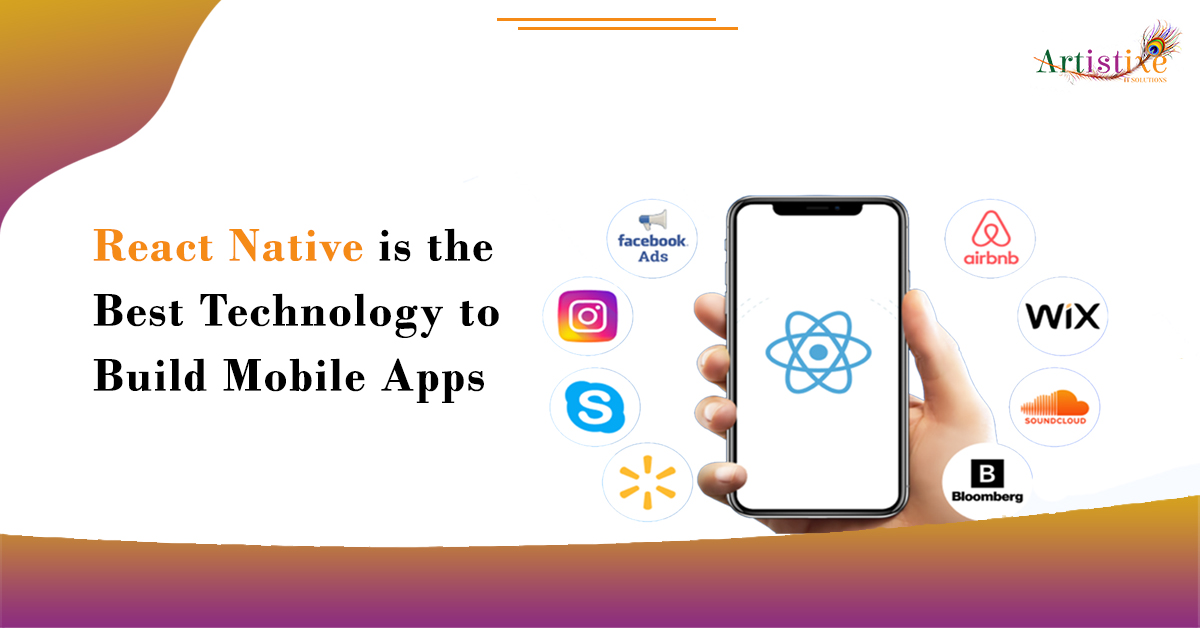Those who want to develop a mobile app are faced with a dilemma: hire native developers or use a cross-platform solution. Previously, the latter was slow, lacked features, and offered a subpar user experience. With React Native, you can build cross-platform apps with a native feel and look.
With React Native, developers can write apps for web, iOS, Android, Windows, and VR thanks to its "learn once, write anywhere" paradigm.
Many great apps have already been created with this technology, including Facebook, Airbnb, Instagram, and Discord.
Although React Native (RN) has many opponents, there are 4 situations in which it makes the most sense to use it:
The working era of React Native
Working prototypes
Apps with streamlined UI
Basic cross-platform apps
Apps that do not heavily utilize native APIs
Let’s see why.
Working prototypes
In most cases, React Native apps began as quick prototypes.
You need to hit the market with a working product if you're a fast-moving startup.
Agile development follows this principle: create a solution before your competitors can respond > get more people to use it > iterate rapidly based on their feedback. By using this approach, you can spend the least amount of time and money to see if your idea is viable.
React Native plays a very important role in this.
You can build a prototype that works on both Android and iOS using it. In addition, the development can be performed 30% faster than with a native tech stack.
With your RN app, your users will experience a truly native experience, unlike hybrid apps.
Apps with streamlined UI
Apps built with React Native can look and perform just as well as their counterparts built with Android or iOS.
On the main thread, their UI is native Java or Swift/Objective-C code. At the same time, a separate JavaScript thread handles most of the business logic within the application.
Both threads are lightning-fast by themselves. However, they cannot communicate without a bridge. The bridges will slow down your app if you send a lot of data over them. The performance will suffer if you use lots of native UI components to interact with the JS code. Complex animations have the same effect.
Keeping the number of passes over the bridge as low as possible will prevent performance bottlenecks.
Your React Native app might require a lot of optimization. Consequently, the framework doesn't provide you with its main benefit because it slows down development. If you move the code to the native side, the Android/iOS guys will need to be more involved.
Thus, another benefit is lost.
A native approach has a massive advantage over RN in calculation-intensive apps (such as messengers with a lot of customization and many background processes).
However, RN is perfect for apps with few interactions and views.
A quick RN prototype was developed after the company became tired of creating apps for iOS and Android separately.
It was so well received by Bloomberg that they decided to develop a full-scale product. With a refined design, the app creates a personalized news feed with stories, videos, and live TV. Smooth animations and great performance make the app fun to use.
With React Native, the team loved the ease of learning, hot reloading, and quick iterations.
Basic cross-platform apps
Going native may be the best option if your app uses many platform-dependent features such as multithreading and audio/video processing.
React Native, on the other hand, is an ideal solution if your target market is evenly split between iOS and Android, but you have a limited budget. With React Native, you can easily create a multiplatform app.
Flexbox is the layout engine for the app and is compatible with Web, Android, and iOS. If you're coming from native development, this will make your life much easier.
Staycloze has developed an app for sharing city guides using React Native. Only one developer worked for the company, so building separate iOS and Android apps was not feasible.
With the help of React Native, Staycloze was able to develop a cross-platform mobile app quickly. They reused most of the logic from their React-based web application in a mobile app since they already had a React-based web app.
Stayclose eventually overcame some early difficulties with the help of community-created fixes. According to the company, the framework provides benefits such as rapid development, code reuse, easy debugging, and a strong community.
Apps that do not heavily utilize native APIs
For things like the camera and GPS, React Native apps have to use native APIs. Consequently, you'll have to write bridges, which is a time-consuming process, requires advanced expertise, and can adversely affect the application's performance. The choice of React Native is reasonable if your app does not make use of many native APIs (e.g. eCommerce).
Wrapping up
With React Native, you can build apps that are just as good as their native counterparts.
There is no comparison between native apps and complex animations, video/audio processing, or heavy reliance on native APIs. In general, however, RN apps have a native UI and perform well.
You can use React Native if you want to create a cross-platform app quickly and be able to carve out a niche in the iOS and Android markets.









0 Comments